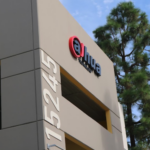Integrated Security Solution Protects Remote Archaeology Site

An advanced, eco-friendly security system is now safeguarding a remote archaeological site in Israel, protecting priceless artefacts from looters, vandals, and accidental damage. Utilizing buried seismic sensors and AI-powered cameras, the integrated solution offers round-the-clock surveillance with minimal environmental impact, providing reliable, non-invasive protection for a site spanning several square kilometers.
Archaeological sites can be irreplaceable windows into the past, with artefacts that help to tell the story of human civilization. However, these locations often face threats, including treasure hunters, vandals intent on destroying heritage, or inadvertent damage from trespassers.
Looters, equipped with modern tools and technology, have become more sophisticated in their attacks. They often operate at night, using careful methods to avoid detection, and target areas that contain valuable artefacts.
The damage caused isn’t just from stolen items. Careless digging can also destroy the crucial archaeological context.
Traditional security measures are often unsuitable, especially in remote locations where conventional surveillance is impractical or would negatively impact the site due to cabling and other infrastructure.
So archaeological sites present challenges that set them apart from typical security scenarios. They often span extensive areas – in the case of this recent project in Israel, several square kilometers – and, unlike buildings with defined entry points, are vulnerable from all angles.
Invisible shield
To address these challenges, one of IDIS’s integration partners in Israel has implemented a security solution that combines multiple technologies to create an invisible shield.
The site was divided into six zones, each containing up to thirty SensoGuard AIO XR seismic sensors and one IDIS AI PTZ camera, working seamlessly to provide proactive protection from boundary to boundary.
The AIO XR sensors, buried carefully underground, act as an invisible early warning system, capable of detecting even the slightest disturbance over and under the ground, whether it’s footsteps, vehicle movements, or digging. At the same time, robust, pole-mounted IDIS AI PTZ cameras provide visual verification.
The AI PTZ cameras feature 36x zoom, automated AI tracking, and night vision up to 1300 feet, making them ideal for expansive archaeological sites. Each pole is equipped with an IDIS AI PTZ camera and a bullet camera to protect the pole, powered by solar energy and featuring 4G-LTE cellular connectivity. Both IDIS cameras feature IDIS Deep Learning Analytics (IDLA) on the edge.
The seismic detectors and cameras work together seamlessly. When a seismic sensor detects potential intrusion, the nearest camera automatically rotates to focus on that exact location of the event. The built-in AI analytics help verify the threat, distinguishing between harmless wildlife and genuine potential risks.
Minimal site impact
With a light footprint and minimal environmental impact, this sustainable security solution now ensures protection for the remote site. The system enables 24/7 monitoring, regardless of weather or lighting conditions, providing non-invasive protection and security without compromising the site’s integrity. It also features a rapid response capability with its immediate alert and verification system, as well as sustainable operation, thanks to solar power, ensuring continuous functionality with minimal maintenance.
The system’s scalable nature also means it can be expanded or modified as needs change, ensuring long-term protection.
“After collaborating with IDIS, we’re delighted to have developed a proven integrated security solution,” says Tomer Levy, SensoGuard CEO. “One that reduces false alarms to ensure quick response to threats, utilizes green energy, and provides complete surveillance coverage.”




















